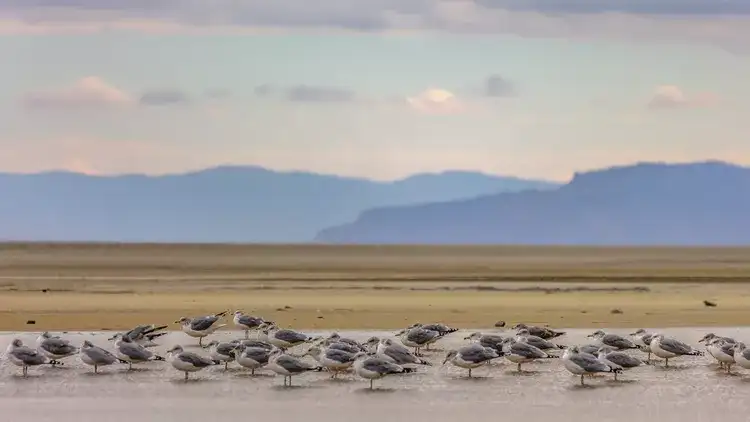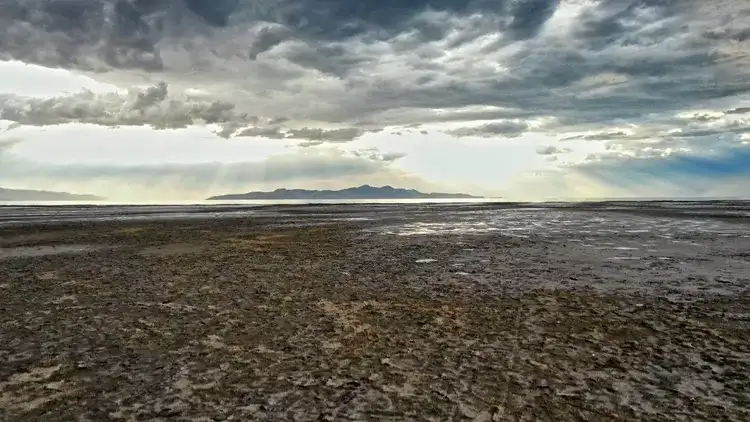The Great Salt Lake a shimmering natural wonder anchoring northern Utah’s landscape is in crisis. Once a sprawling sanctuary for millions of migratory birds and a backbone of Utah’s economy, the lake is rapidly shrinking due to human-caused water diversions. Now, conservation and public health organizations are taking legal action to hold the state accountable.
A Lake on the Brink
Fed by mountain rivers and seasonal precipitation, the Great Salt Lake is the largest saline lake in the Western Hemisphere and the eighth-largest terminal lake in the world. Its ecosystem supports an immense variety of birds and wildlife, while also contributing billions of dollars annually through mineral extraction, recreation, and tourism.
But upstream diversions primarily for agriculture, residential use, and industry have created a water deficit of over 1 million acre-feet annually in recent years. The result is an alarming decline in lake levels, bringing the ecosystem dangerously close to collapse.
Legal Action Demands Urgent Reform
Citing the state’s failure to protect a vital public resource, a coalition of environmental and health advocacy groups represented by Earthjustice has filed a lawsuit in Utah’s 3rd District Court. The complaint argues that Utah’s Department of Natural Resources (DNR) has violated the public trust doctrine by neglecting its legal duty to preserve the Great Salt Lake for the benefit of all Utahns.

What the Lawsuit Seeks
The plaintiffs are requesting a court mandate that would compel state officials to take decisive action and implement sustainable water management policies. Specifically, they want upstream diversions reduced to allow enough freshwater to flow into the lake to restore its ecological balance.
“The baby steps Utah has taken at the Great Salt Lake are woefully inadequate to sustain the American West’s largest wetland ecosystem,” said Zach Frankel of the Utah Rivers Council. “We need the state to stop ignoring the upstream water diversions that are spiraling the lake and its wildlife into oblivion.”
A Looming Public Health Crisis
As the lakebed dries out, toxic dust containing arsenic, mercury, and other hazardous pollutants becomes airborne, creating dangerous air quality issues for nearby communities. Experts warn that Utah could face a catastrophe similar to those seen in places like Iran’s Lake Urmia and California’s Owens Lake both of which dried significantly due to water mismanagement.
“Where saline lakes have been allowed to shrivel, the end result has been public health disasters from clouds of relentless toxic dust,” said Dr. Brian Moench of Utah Physicians for a Healthy Environment. “Utah’s leaders are prioritizing these water diversions over protecting their own people, so the courts must intervene.”
Ecological Importance and Wildlife at Risk
The Great Salt Lake serves as a critical stopover for over 12 million migratory birds each year, representing more than 300 species. Organizations like the National Audubon Society and the American Bird Conservancy warn that continued degradation of the lake could have devastating consequences for global bird populations.

Species in Peril
- Wilson’s Phalarope
- Red-necked Phalarope
- Eared Grebe
- Northern Shoveler
- Green-winged Teal
- Common Goldeneye
- California Gull
“We can’t afford to have this significant body of water turn into dust,” said Michael J. Parr, president of American Bird Conservancy. “Water management decisions must balance water quantity and quality for birds, people, and the local economy.”
Public Outcry and Political Inaction
Surveys from Utah State University show that the drying lake and drought are top environmental concerns for state residents. Despite widespread public support for action, advocates argue that political leadership has failed to meet the moment.
“Utahns want to see the Great Salt Lake protected,” said Maria Archibald from the Sierra Club’s Utah Chapter. “Unfortunately, our state leaders have repeatedly demonstrated that they aren’t interested in taking meaningful action to address this urgent issue.”
What’s at Stake
Beyond the immediate ecological and health consequences, the collapse of the Great Salt Lake would strike at the heart of Utah’s identity endangering its biodiversity, damaging its economy, and harming the well-being of millions of residents.
With this lawsuit, advocates are calling on the courts to do what state officials have not: recognize the lake as a public trust resource, and enforce legal protections to prevent irreversible harm.
“The Great Salt Lake belongs to the people of Utah,” said Stu Gillespie of Earthjustice. “The state has a legal obligation to protect this resource and now, a moral one to future generations.”





